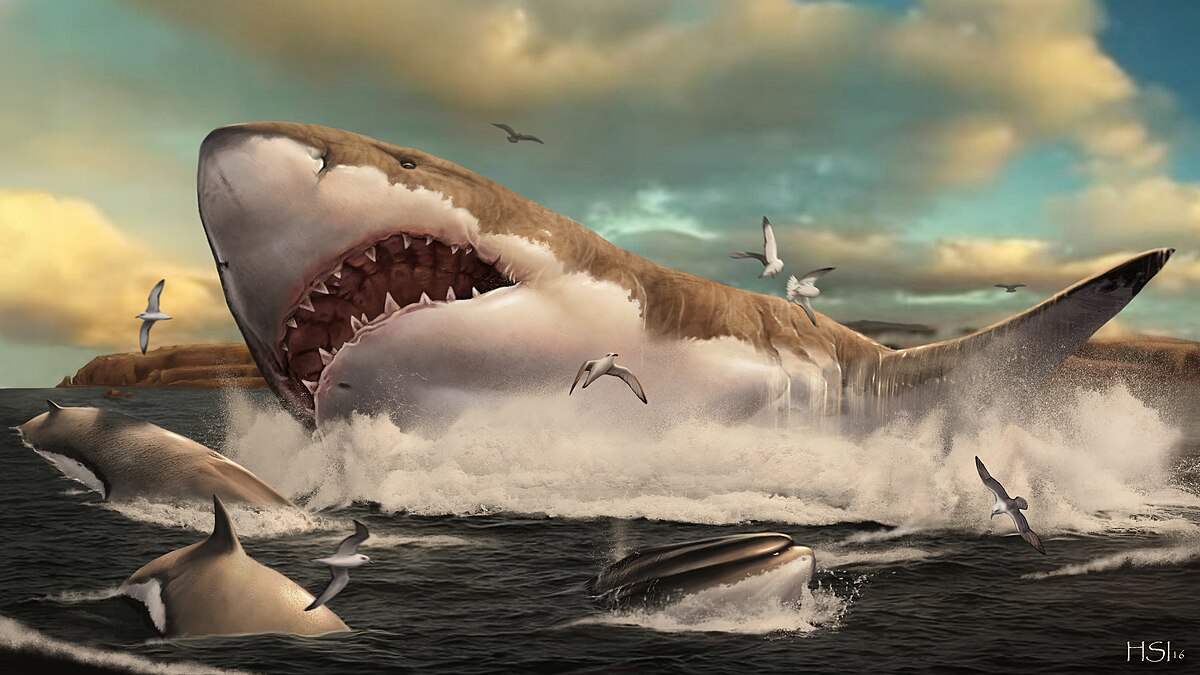Megalodon is one of the most famous prehistoric animals from pop culture, starring in many movies and documentaries. The animal is instantly recognizable among the public and scientists alike, with its six-inch teeth and gaping mouth. The most impressive aspect of this shark is its size, with estimates ranging from 50 to 60 feet in length. Depicted as a scaled-up Great White Shark, illustrations of this animal show an active and agile predator, able to eat anything that fits in its mouth. It would have been the king of the Miocene seas, with very few animals rivaling it in size. But what if it was even bigger?
That’s the question proposed by Sternes et al. in the research team’s paper, which was published in 2024. They factor in topics such as Megalodon’s re-evaluation of its validity as a species and new discoveries to come to this suggestion. When I was growing up, all of my dinosaur books classified the shark as Carcharodon megalodon, or Megalodon for short. Scientists at the time thought that Megalodon was a very close relative to the modern day Great White Shark (Carcharodon carcharias) hence the sharing of the genus name. Since sharks are cartilagenous, very few Megalodon bones have been discovered. Teeth are found in abundance due to the amount of teeth lost by an individual in its lifetime (and are easier to fossilize), but other parts such as jaws and vertebrae are much harder to find due to their high calcium content. Because of this, paleontologists often reconstructed both physical models and illustrations of Megalodon to resemble a gigantic, scaled-up version of C. carcharias. Due to some new discoveries, scientists have re-evaluated Megalodon, and found out that it wasn’t that closely related to C. carcharias at all. Instead, Megalodon has been placed in the Otodus genus, which is a group of extinct sharks. Megalodon’s full name is now recognized as Otodus megalodon. Sternes et al. realized that O. megalodon should have new body dimensions, since it’s not directly related to its thought-to-be relative. The team took O. megalodon‘s vertebral column (which is a copy of C. carcharias‘s spine) and lengthened the distance between the vertebrae, stretching out the shark. This newly proposed estimate places the shark around 65-80 feet long, which is insane to think of an animal (let alone shark) that big. This team still believes in the widely accepted theory that O. megalodon was an active predator, able to pursue prey quickly but also swim long distances to find more prey.

O. megalodon is one of my favorite prehistoric animals, and I’m glad it’s getting more and more research done on it. Despite being so popular, new discoveries were hard to make on this animal because of its poor representation in the fossilization record. However, with new discoveries being made, teams like Sternes et al. have brought forward new information about one of the biggest predators to ever live on Earth. I’m looking forward to future discoveries about O. megalodon, and I hope I get to be one of the people making discoveries about this shark!
* Otodus megalodon in sea restoration by Hugo Salais.
https://commons.wikimedia.org/wiki/File:Otodus_megalodon_in_sea_restoration.jpg
